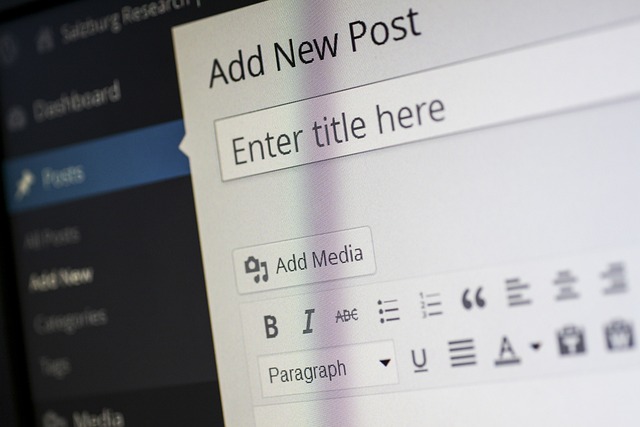Content Marketing is a never-ending process. After all, content that is still up-to-date today may be outdated tomorrow and will completely fail in performance the day after tomorrow. It is therefore important to regularly review existing articles. A content audit is suitable for this.
This major evaluation will help you to identify the potential for optimization and to improve your content. We will explain to you what is important in a content audit and how you can effectively achieve your goal!
What is a content audit?
A content audit is something like an inventory of the existing content. This takes place on a qualitative and quantitative level.
So it comes down to two questions: What content is on the website? How well does this content serve its purpose? On the one hand, it’s about collecting the sheer amount of content and the associated numbers, and on the other hand, it’s about the extent to which the content works on a qualitative level.
A content audit helps i.e. in the process of recording the actual status and comparing it with a target status. With regard to the content marketing strategy, one can speak of an evaluation. They record what has happened so far, what works how well, and ultimately where there is potential for optimization measures.
Why do a content audit?
In content marketing, it is often difficult to question measures during the ongoing process. After all, you worked extensively on a strategy in advance and are now intensively involved in its implementation. Far too often there is little time in day-to-day business to reflect on what works well and where there are possible problems.
A content audit is a good opportunity for location determination. This allows you to evaluate the content, identify gaps in content creation, discover optimization potential and improve your content overall. Strategic adjustments are also possible on the basis of this survey.
Ultimately, a content audit helps to achieve the goals of content marketing – e.g. B. more clicks, traffic, and conversions – easier to achieve.
How does a content audit work?
In general, this measure can be divided into two areas. It makes sense to start your survey with a quantitative analysis, i.e. the survey of the mere mass of content and the relevant key figures. You can then build on this to record the qualitative side of the content – and in the last step derive sensible measures for optimization.
The quantitative analysis
Quantitative analysis is something like an inventory. The first thing to do is to list all the URLs that belong to your site. This gives you an overview of which pages actually exist. Then enter further facts and figures for these URLs such as:
- Page Title
- Publication date & author (if available)
Key figures such as impressions, clicks, click-through rate, bounce rate, conversions, rankings…
There are a number of tools that can be used to collect all of these hard facts. You can use the bare URLs e.g. B. from the sitemap. The relevant Key Performance Indicators (KPIs) can be found in the Google Search Console or Analytics. In addition, there are a variety of free and paid tools that will help you with the inventory.
It doesn’t really matter which tool you use. The point is simply that you can work with it as well as possible and reach your goal. At the end of the quantitative analysis, there is usually a table with a large number of facts and figures about your website. But other processing options are also conceivable.
The qualitative analysis
Based on the quantitative analysis, you can now turn to the qualitative analysis. This includes criteria that cannot be measured objectively using a numerical value. There is no ready-made scheme or tool here to help you accurately categorize the content. Instead, you have to set up a system for yourself that works.
For the sake of comparability, it makes sense to define various factors that are used to evaluate quality. It is conceivable z. the ROT analysis (Redundant? Out of Date? Trivial?) or the ARA analysis (Current? Relevant? Appropriate?). With each of these three categories, you can determine whether the content is convincing on the qualitative level.
For even more comparability, you can then rate the content. This can be done using school grades, a specially defined point scale (e.g. 1-10), with a traffic light from red to green, or in free text form.
In the qualitative analysis, there is no right or wrong in the implementation. Find the method that suits your needs and your way of working.
Important: Always be critical and take your time. This is the only way to get target-oriented results in the content audit.
Content Audit – what now?
You did do the quantitative and qualitative analysis? Then it is now a matter of drawing the right lessons from the many figures and tables. This results in a large number of lessons and measures that you can draw from the two pages of the content audit.
Lessons learned from the quantitative analysis:
- Which topic areas were covered how extensively with a view to a content plan?
- Are there possibly gaps in the Content that should be filled?
- Is there duplicate content that could lead to keyword cannibalism?
- Has the content plan been implemented conscientiously?
- Has enough content been produced or does the publication rate need to be adjusted?
- Tell good rankings that the basic SEO measures work or are there a need for optimization?
- Does content get high impressions or doesn’t rank well enough and therefore need to be optimized?
- Is the content in the search results clicked or should the Google snippets be changed?
- Does keyword cannibalism occur due to merging or deleting pages needing to be fixed?
- Does a low CTR or a high bounce rate show that the content is not well received by the users?
Lessons from the quantitative analysis:
- Is there content on the site that is no longer current and therefore revised or should be removed?
- Are the contents and Ohl for users as well as for search engines relevant?
- Are the contents dealt with in-depth or are they trivial?
- Is the content fit for purpose and appropriate in their preparation?
- Is the respective page pleasant to use in view of the User Experience?
- Is the content implemented according to the standards of Diversity of Content and overall appeal?
Derive and implement measures
If you have critically questioned your content with all these aspects, you can derive the appropriate measures from both the qualitative and the quantitative analysis. Depending on where weaknesses are revealed, sort them by priority and work through them systematically. In general, the content audit results in different stages of revision:
Keep Content because it is qualitatively and quantitatively convincing.
Update content because the information is no longer up-to-date.
Rework content, enrich and deepen the content, because KPIs and/or qualitative factors are not convincing.
Improve content to optimize the KPIs via SEO.
Delete content to pull the ripcord in an emergency.
You can optimally derive which measures appear appropriate for which content article from the hard facts and the qualitative survey. This is how you improve your content strategically and purposefully.
5 questions to quickly check your content
For a quick overview of which content needs precise examination and revision, you can shimmy along a simplified five questions. If you answer “Yes” to all questions, then the content can remain as it is. However, if it comes to a “No”, then you should take a closer look and possibly implement optimizations.
Was the content created in the last 6 months?
Does the page rank high for the relevant keyword and thus get an appropriate number of impressions?
Does the page get a reasonable number of clicks and thus (organic) traffic?
Users stay on the site and spend there for a reasonable length of time?
Do users then also choose actions or come back later?
Depending on where you say “No”, the optimization measures vary in severity. For example, if content B. is older than 6 months, only needs to be checked whether it is up to date. If the article ranks poorly or not at all, it is about SEO. If, on the other hand, the number of clicks and traffic are correct, but users jump off quickly or do not carry out any actions, then the content itself may not be convincing.
After the analysis is before the analysis…
Content audits are always a big deal and usually lead to a multitude of optimization measures. Don’t worry: This is completely normal. Because no matter how much knowledge you have about the target group, content, and search engines – in the end, both Google’s paths and those of users are unfathomable.
Self with the most detailed planning, you can never know exactly how the algorithm will work and how people will view the page care and use it. Many to-dos following a content audit should never be seen as a devaluation of previous work, but always seen as an opportunity.
And when you have incorporated everything? Then you can hopefully enjoy rising KPIs in day-to-day business – and ideally schedule the next content audit appointment. In the best case, you should find time for such a site determination every year.








